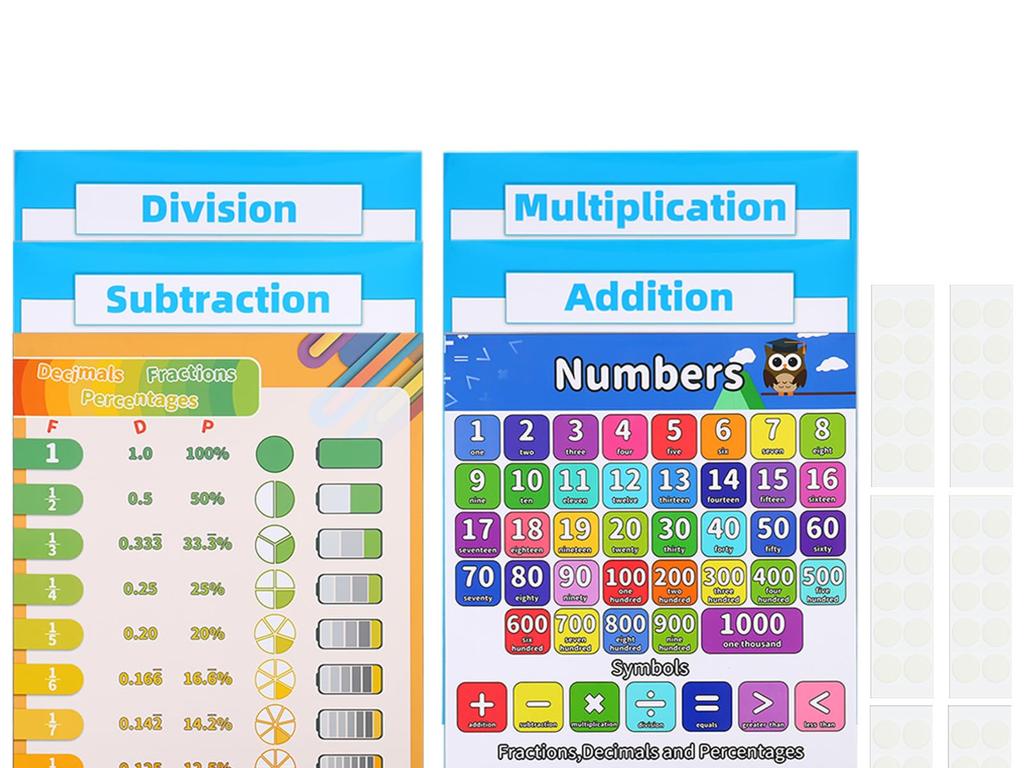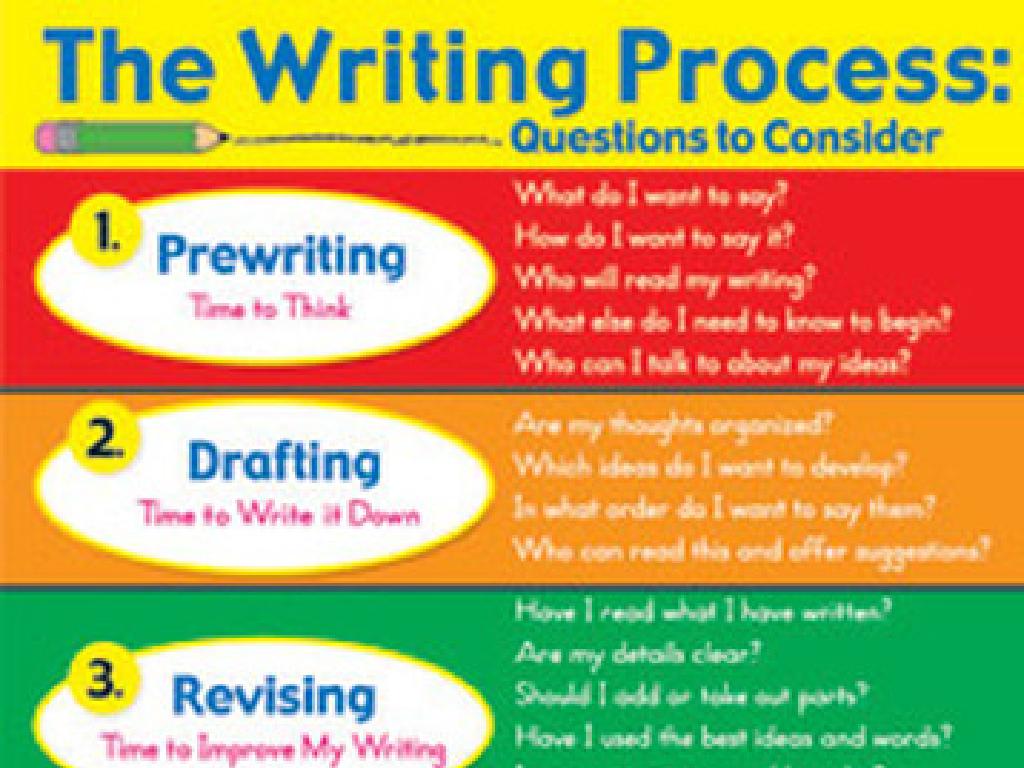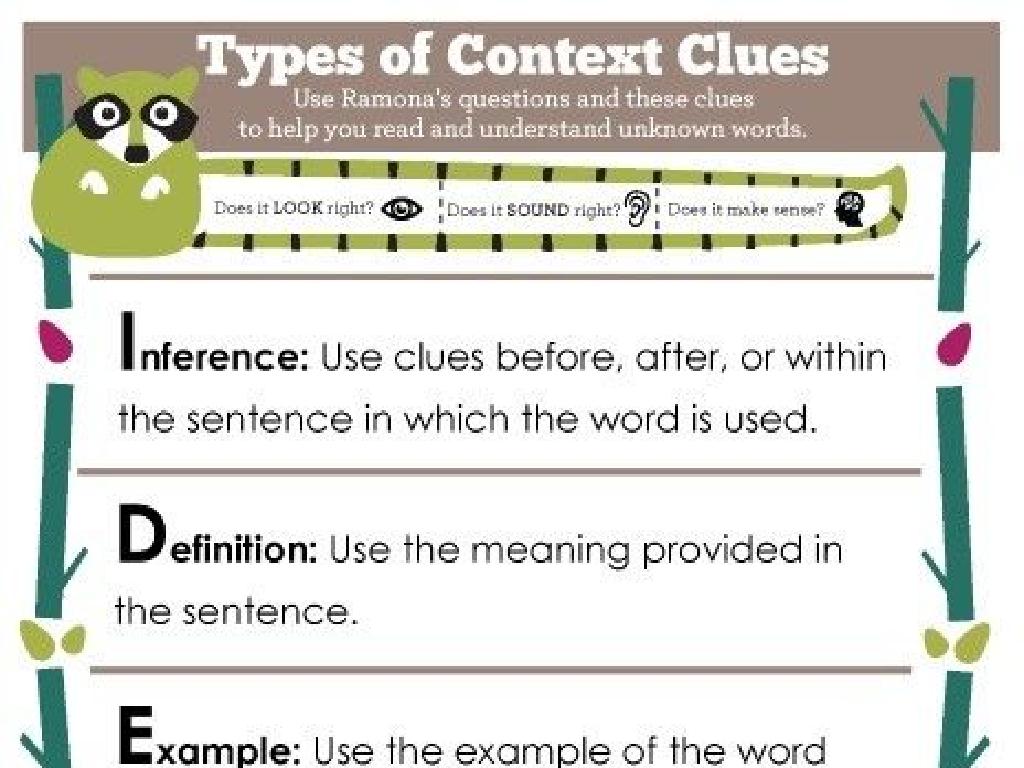Graph Solutions To Two-Step Inequalities
Subject: Math
Grade: Seventh grade
Topic: One-Variable Inequalities
Please LOG IN to download the presentation. Access is available to registered users only.
View More Content
Introduction to Inequalities
– Define inequalities
– An inequality shows the relationship between values that are not equal.
– Inequalities vs. equations
– Unlike equations, inequalities do not show equality but a range of possible solutions.
– Real-life inequality examples
– Budgeting allowance, or minimum height for a ride.
– Graphing on a number line
– Use a number line to represent solutions to inequalities.
|
Begin the lesson by defining inequalities and how they differ from equations, emphasizing that they show a range of possible solutions rather than a single answer. Provide relatable examples such as budgeting a weekly allowance or requirements like the minimum height for an amusement park ride to illustrate how inequalities are present in everyday life. Explain that graphing inequalities on a number line helps visualize the range of possible solutions. Encourage students to think of other real-life scenarios where inequalities apply. This will set the foundation for understanding how to solve and graph two-step inequalities.
Graphing Two-Step Inequalities
– Define one-variable inequalities
– An inequality shows the relationship between two expressions that are not equal.
– Understand inequality symbols
– Symbols: > (greater than), 5, subtract 3 from both sides, then graph x > 2.
|
This slide introduces students to the concept of one-variable inequalities and how to graph them. Start by defining what an inequality is and how it differs from an equation. Explain each symbol and what it represents. Demonstrate how to graph simple inequalities on a number line, using open circles for ‘greater than’ or ‘less than’ and closed circles for ‘greater than or equal to’ or ‘less than or equal to’. Emphasize the importance of the direction of the shading on the number line. Provide several examples for students to practice, ensuring they understand how to manipulate the inequality to isolate the variable before graphing.
Understanding Two-Step Inequalities
– Define two-step inequalities
– An inequality solved with two operations, e.g., 2x + 3 > 7
– Solve a two-step inequality
– Example: Solve 2x + 3 > 7. Subtract 3, then divide by 2
– Reverse sign when using negatives
– If you multiply/divide by a negative, flip the inequality sign
– Why sign reversal is crucial
– Ensures the inequality stays true when using negative numbers
|
Begin by defining two-step inequalities, emphasizing that they require two operations to solve. Provide a clear example, such as 2x + 3 > 7, and demonstrate the steps to solve it: subtracting 3 from both sides and then dividing by 2. Highlight the importance of reversing the inequality sign when multiplying or dividing by a negative number, as this is a common mistake that can lead to incorrect solutions. Explain that this rule is essential to maintain the truth of the inequality. Encourage students to practice with additional examples and to always check their work by substitizing the solution back into the original inequality.
Graphing Two-Step Inequalities
– Steps to graph inequalities
– Identify the inequality, solve for x, draw a number line, and plot the solution.
– Example: x + 3 > 5
– Solve the inequality: x > 2, then graph on a number line with an open circle at 2 and shade to the right.
– Shading the solution set
– Shade the number line where the values satisfy the inequality.
– Checking solutions on the graph
– Pick values from the shaded area to verify they satisfy the original inequality.
|
This slide introduces students to the process of graphing two-step inequalities. Start by explaining the steps to solve for the variable and then how to represent the solution on a number line. Use the example x + 3 > 5 to demonstrate solving the inequality and graphing the solution. Emphasize the importance of shading the correct side of the number line to represent all possible solutions. Encourage students to check their graph by selecting points from the shaded area and substituting them back into the original inequality to ensure they satisfy the condition.
Practice: Two-Step Inequalities
– Solve inequalities as a class
– Step-by-step guided practice
– Follow along using the example: 3x + 4 > 10
– Discuss strategies for solving
– Look for inverse operations and balance
– Review common mistakes
– Common errors: forgetting to flip the inequality when multiplying/dividing by a negative
|
This slide is focused on engaging the class in active problem-solving of two-step inequalities. Start by solving a few inequalities together, guiding students through each step. Emphasize the importance of inverse operations and maintaining balance between both sides of the inequality. Discuss various strategies such as simplifying expressions and checking solutions. Highlight common mistakes, such as not reversing the inequality sign when multiplying or dividing by a negative number. Provide multiple examples and encourage students to ask questions. For the activity, consider having students work in pairs to solve problems, then discuss as a class. Offer at least four different problems for variety and to accommodate different student skill levels.
Class Activity: Inequality Match-Up
– Pair up and solve two-step inequalities
– Find the matching graph on the board
– Discuss solutions with your partner
– Compare your answers and reasoning
– Reflect on different solution methods
– How did your approach differ from your partner’s?
|
This activity is designed to encourage collaboration and discussion among students as they work through two-step inequalities. Each pair will receive a set of inequalities to solve. Once they’ve found the solutions, they will then look for the graph on the board that represents their solution. This will help them visually understand the solution set of an inequality. After matching, they should discuss how they arrived at their answers and consider the different methods used. As a teacher, circulate the room to offer guidance and ensure that each pair is on the right track. Be prepared with additional examples in case some students finish early or require extra practice. This activity not only reinforces their problem-solving skills but also their ability to communicate mathematical reasoning.
Homework and Further Practice: Mastering Two-Step Inequalities
– Complete assigned homework problems
– Create your own two-step inequalities
– Invent problems to challenge yourself and classmates
– Review using available resources
– Use your textbook, educational websites, and watch tutorial videos
– Seek help if you’re stuck
– Don’t hesitate to ask your teacher or peers for assistance
|
This slide aims to reinforce the students’ understanding of two-step inequalities by providing them with structured homework and encouraging independent practice. Assign a set of problems that cover a range of difficulties to cater to all students. Motivate students to create their own two-step inequalities as a way to deepen their comprehension and engage with the material creatively. Remind them of the resources they have at their disposal, such as textbooks, online videos, and websites that offer practice problems and explanations. Emphasize the importance of seeking help when they encounter difficulties to ensure they don’t fall behind. Provide guidance on how to approach problems systematically and remind them of the strategies discussed in class.
Wrapping Up: Two-Step Inequalities
– Review key inequality concepts
Recall solving inequalities with two steps, like 2x + 3 > 7.
– Open floor for questions and answers
– Share your learning takeaways
What’s one new thing you understand about inequalities?
– Encourage continued practice
Practice makes perfect! Keep solving different inequalities.
|
As we conclude today’s lesson on two-step inequalities, it’s important to revisit the main concepts to reinforce learning. Start by summarizing the process of solving inequalities that require two steps. Then, open the floor for a Q&A session to address any uncertainties or confusion students may still have. Encourage each student to share one thing they’ve learned; this not only helps to solidify their understanding but also allows you to gauge the effectiveness of the lesson. Finally, remind students of the importance of practice in mastering math skills and encourage them to continue working on similar problems at home.






